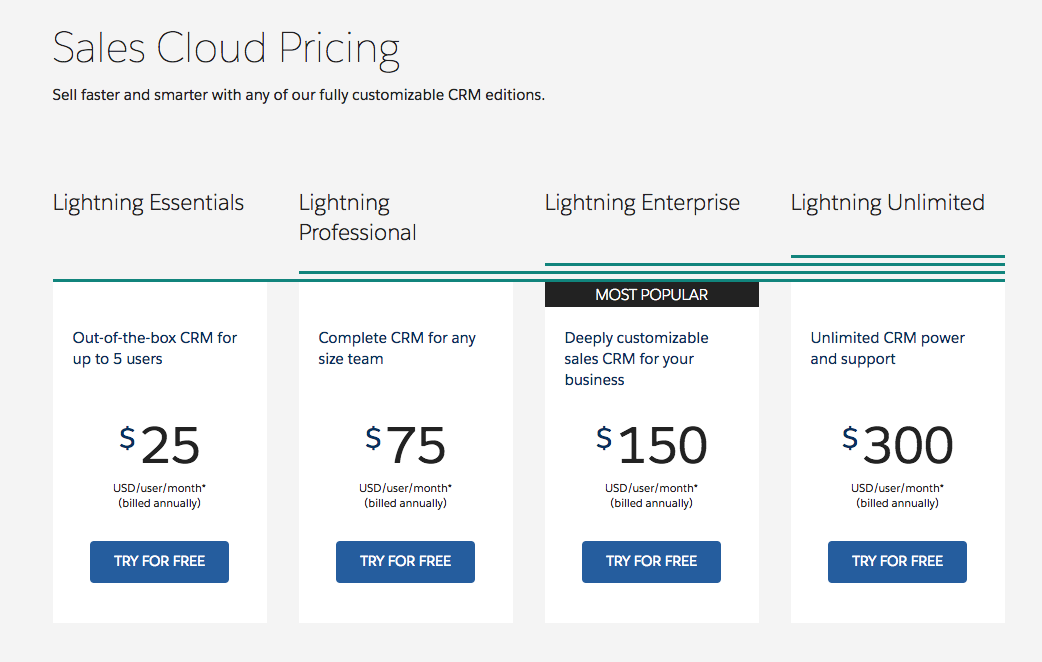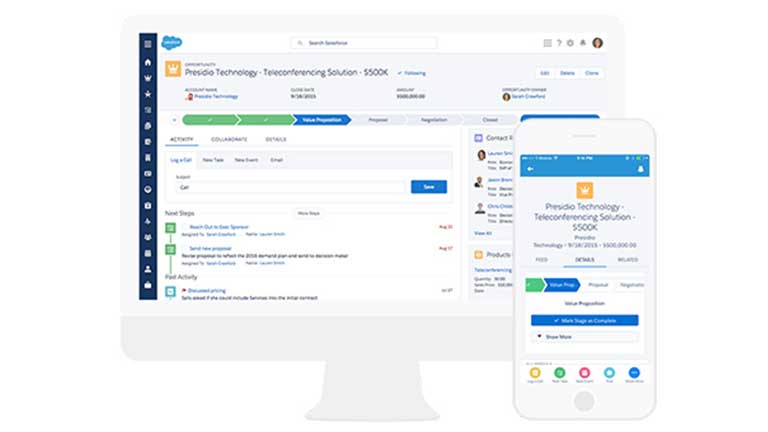SALES OPERATION INTEGRATION
Sales Summit: Embracing Digital Disruption to Power Sales Growth
Embrace Digital Disruption to Power Sales Growth
There is greater pressure than ever to maximise sales results. However, traditional sales operations have been displaced by empowered customers, who, with the ability to research options and solutions, are over halfway through the buying process before they ever talk with a salesperson. Successful companies will learn to embrace this digital disruption and change their CRM roadmap.
Yasuf Tayob, managing director of Accenture, presented a discussion at Dreamforce 2015. Tayob contends that embracing digital disruption powers sales growth. Tayob sees digital disruption through the lenses of customers, sellers, and competitors. He offers solutions to embrace trends in sales brought on by digital disruption.
What is Digital? Tayob defines digital as encompassing a collection of tools and trends including mobility, analytics, data integration, Internet searches, and social media. As a collective, these digital tools and trends have disrupted the traditional sales cycle.
For decades, the sales process has been linear, and most companies have developed very sophisticated internal organisations and processes to optimise a linear sales process from marketing leads, to sales activities, through contracts, and finally to a management and service relationship with the client.
Technology advances are quickly changing the traditional cycles. Digital has disrupted and will continue to disrupt all aspects of a client relationship, especially sales. The linear sales cycle is going away, says Tayob, but that doesn’t have to be a bad thing. How have successful companies disrupted old patterns? What opportunities are available to leverage digital disruption?
Tayob suggests an understanding through the perspectives of the customer, the competitor, and the seller.
The Customer Has Changed the Rules
Customers have used digital to change the rules about how we sell. The new customer says, “I don’t care who you are in the company, I expect the same level of service from everyone.” This customer is more dynamic and demands more because they have more access, more information, and more choice. Search engines are the most obvious example of digital disruption, giving the customer information fast. Customers are also less loyal and they have greater expectations, explains Tayob. They are always evaluating and ready to switch vendors based on choices and experiences. Therefore, businesses must be in-tune with customer expectations so the solution, service, or product lives up to those demands.
Competitors are Coming to the Market Quicker
Not only has digital changed customers, digital has also allowed competitors to enter the market in non-traditional ways. It has never been easier to get into a new industry. Many competitors are using social media and other new digital tools to attract customers. Tayob cites the new company, Uber, that uses private drivers and their personal cars. An example of how quickly competitors might enter the market, Uber comes in direct competition with taxi companies.
Digital provides both challenges and opportunities for sales operations. Digital disruptors are ending brick & mortar businesses in some cases. At the same time, some companies are expanding existing market share, and some having scale and capability are entering new markets and going places they have never gone before.
How Does the Seller Embrace Digital Disruption
With heightened customer expectations and more aggressive competition, how can sellers use digital disruption to their advantage?
Sellers see digital disruptions across marketing, sales, and service. There is more data, whether from analysis done in-house or more information that sellers get on their own. They have new devices with more power and information. They are connected with customers in different ways.
Tayob says, “With all this data and all this information and all this collaboration, we are throwing a lot of administrative and operational activity at [sellers], taking them away from the customer more and more. We often get asked the question, how do I put my salespeople back in front of the customer?”
Many companies launch digital initiatives to increase their sales teams’ relevance. Too often, however, other initiatives and objectives are simultaneously implemented with competing goals, with different metrics, or with objectives defined by different measures. So although digital disruption offers great opportunities, fragmented objectives and competing goals often get in the way.
In the face of changes and disruptions, Tayob has some recommendations for adjusting the way we sell to leverage digital and meet success. Based on the successes of large organisations that Accenture has worked with, Tayob presents an acronym for success: SPEED.
S - Spend optimisation: Put your money where your profit is;
P - Price and profit optimisation: Deliver profit, not just revenue;
E - Execution/excellence & ops: Drive excellence in execution;
E - Enablement of talent: Use science to improve sales talent; and
D - Digital selling: Embrace dynamic channels;
Spend Optimisation
If you consider all the variables that a salesperson can manipulate in order to offer a deal, you will quickly see that the variables don’t change much from deal to deal. Successful companies apply analytics to track and measure sales spend return on investment. In many industries, companies need to shift their operating model to delivering services rather than traditional products. Services, with monthly fees or renewable contracts provide valuable services to clients while providing regular revenue. Companies need to evaluate which investments in their products or services will provide optimal returns.
Price and Profit Optimisation Using Data Integration
Part of embracing digital means taking a good look at pricing. Salespeople tend to round pricing quotes down; yet one percent improvement in price, or profit optimisation, is worth 7 to 10 points to the bottom line in a sale, Tayob explains. The opportunity is significant; yet salespeople are inclined to optimise discounts. Tayob says in many companies the salespeople try to maximise discounts, sending special pricing requests to management. He says there are companies where roughly 90% of deals had special pricing submitted, and of those, 80% of the deals were approved.
Data integration can affect the price and profit optimisation, helping salespeople understand pricing analytics and empowering them to seek optimal pricing. Tayob did a focus group where clients were given pricing analytics on both the front and the back end of the sales cycle. Rather than sending deals for pricing approval, the companies in the study provided analytics to the salespeople for the highest and lowest possible pricing; the salespeople were allowed to price the deal within the parameters. Tayob reports that 80 percent of the organisations in the focus group priced deals at the prescribed price or higher.
When you put the right analytics into the hands of the salespeople, you empower salespeople to make deals quicker. With an empowered sales team, the CRM roadmap becomes more clear.
Execution Excellence and Sales Operations
Historically, sales operations have been an administrative function providing descriptive analytics at the end of sales quarters. While data integration is powerful to optimise for sales operations, the greatest opportunity in digital is to create a predictive and prescriptive sales organisation.
Sales operations, says Tayob, should use three types of sales data: traditional CRM data, publicly held data, and inferred data. First, there is the traditionally held data that includes information in CRM and the information salespeople have within the company. Second, an organisation should obtain and use publicly available information such as data made available on social media sites. Understanding who a customer is gives a great digital advantage when trying to understand how to help them reach their goals. The third type of data is inferred data, or information that can be inferred based on data that has been gathered from the first two types. Integrating these three types of data can produce much better sales. For example, if a customer announces a new manager or new product line over social media, the sales rep can refer to CRM data to see account history and then help the customer plan. The inferred data allows the company to meet the customer’s new responsibilities or needs.
Enablement of Talent
It is more important than ever to hire and retain talented sales professionals. Embracing digital means applying science to uncover the DNA of high performing sellers, and then use those insights in the hiring cycle, says Tayob. There is an old adage that most of the sales revenue is brought in by a small percentage of the sales team. In general, only 60% of salespeople make the targeted sales quotas. Digital can help achieve fundamentally different sales performance. Using analytics, companies can identify the behaviour and character traits of the most effective sales talent and then to nurture and recruit the combination of competencies, character traits, and behaviours that will yield an effective seller within the organisation.
Digital Selling and Dynamic Channels
When sellers begin a discussion with the customer, most buyers are 58% through the buying process because they are more informed. All sales channels need to be responsible for bringing in a sale, rather than just the sales team. Successful companies align incentives and objectives between marketing and sales around qualification of leads. They are investing in providing sellers with digital tools like tablets with prescriptive tools such as videos, signatures, and optimised pricing. The CRM roadmap should encompass sales enablement, where marketing and sales work together to create and use tools to enable and empower the seller. As companies realise their sales teams are guides to their empowered customer, they will find ways to use dynamic digital channels to educate and help their customers.
Use Digital Disruption to Your Advantage
Digital has disrupted the traditional sales model. Customers have rewritten the rules based on what digital offers them. Competitors are coming to the market much quicker and new entrants are disrupting legacy providers. To reach sales goals, companies must take advantage of all the information that is thrown at them.
Your business can use this digital disruption shift to its advantage. Tayob summarises his recommendations, saying, “Companies that have embraced digital disruption successfully have thought about it on these five dimensions of SPEED: spend optimisation, price and profit optimisation, execution excellence: really creating a prescriptive sales engine, enablement of talent, which is putting analytics on to the DNA of how to hire strong sales talent, and then using digital selling to enable all of the dynamic channels.”



